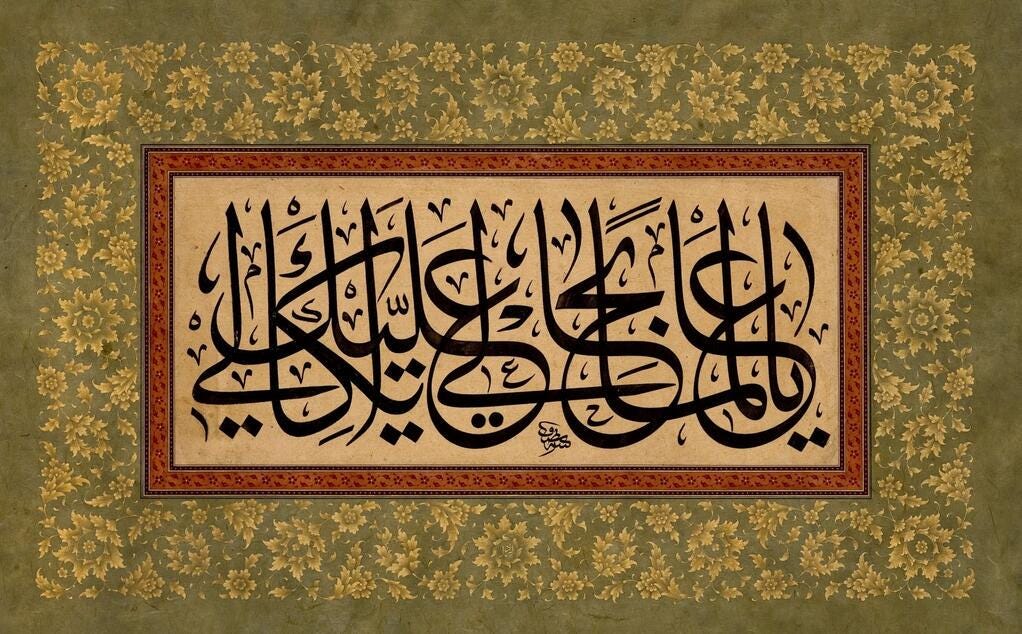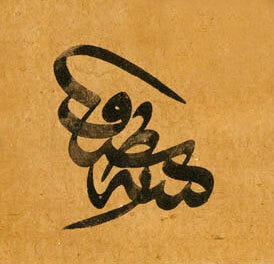Portrait: Mehmed Nazif Bey
Unveiling the Mastery, Inspiration, and Enduring Influence of a Remarkable Artisan.
Mehmed Nazif Bey, also known as Hacı Nazif Bey, was a renowned Ottoman calligrapher. He was born in Rusçuk, which is now known as Ruse in Bulgaria, in 1846. His father, Mustafa Efendi, was of Crimean-Turkish descent. At a young age, Nazif Bey moved with his family to Dobruca and later to Istanbul. In Istanbul, he gained recognition as a calligrapher.
During the early 1880s, Nazif Bey had the opportunity to meet and learn from the esteemed calligrapher Sami Efendi, thanks to the mediation of another calligrapher, Hasan Rıza Efendi. Under Sami Efendi's guidance, Nazif Bey honed his skills in various calligraphic styles, including ta'liq, diwani, and jalî diwani. He also learned the art of drawing tughra, the elaborate calligraphic emblem used by Ottoman sultans.

After the passing of his close friend Arif Efendi in 1892, Sami Efendi appointed Nazif Bey as his successor, entrusting him with the responsibility of carrying on his legacy. Nazif Bey cherished his relationship with Sami Efendi and acknowledged his mentor's profound influence on him. He once remarked, "I truly understood him only after becoming a master myself." In 1907, Nazif Bey received an ijazah (certificate of authorization) from Sami Efendi at the age of 60, which further solidified his position as a respected calligrapher.
Nazif Bey's expertise primarily lay in the Jali script, and he excelled in its execution. His ability to write larger works using a pencil instead of the traditional reed pen set him apart. This unique skill allowed him to produce remarkable calligraphic works with precision and finesse. He also demonstrated his versatility by imitating the styles of other esteemed calligraphers, such as İsmail Zühdi and Shawqi Efendi, in his thuluth and naskh compositions. Additionally, he meticulously replicated Yesârizâde's "Hilye-i Hâkânî" in a twenty-four-page muraqqa.

Nazif Bey remained dedicated to his craft throughout his life, consistently producing exceptional calligraphic pieces. He was known for his attention to detail and his commitment to preserving the traditional art of calligraphy. Nazif Bey's contributions to the field extended beyond his own works. He played a significant role in the Harbiyye-i Umûmiyye Matbaası (Printing Service of the Ministry of General Staff), where he specialized in writing place names on maps using lithography.
Despite his artistic achievements, Nazif Bey faced personal hardships. He suffered from heart problems and passed away on 29 Rabi' al-Awwal 1331 (8 March 1913) due to a severe crisis. The exact location of his grave, which is believed to be in Yahya Efendi Dergâh Cemetery, remains unknown. Apart from calligraphy, Nazif Bey possessed other talents, such as creating Karagöz figures from camel leather and his interest in wrestling during his youth. He would occasionally break wood with an axe to maintain his focus while writing.

Nazif Bey's legacy lives on through his remarkable calligraphic works and his contributions to the preservation of Ottoman calligraphy. His dedication to the art form and his mastery of various scripts continue to inspire calligraphers and enthusiasts alike.





